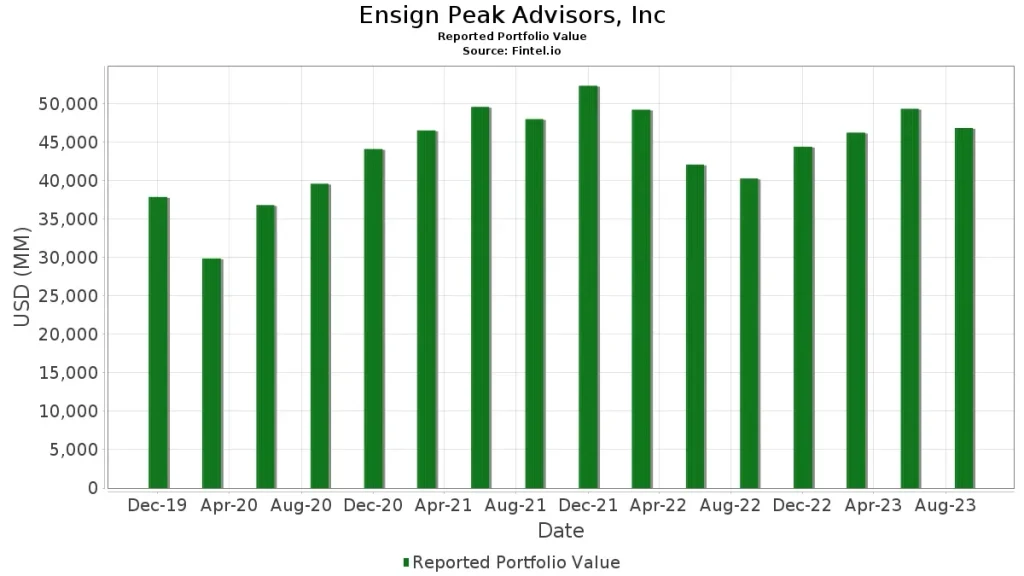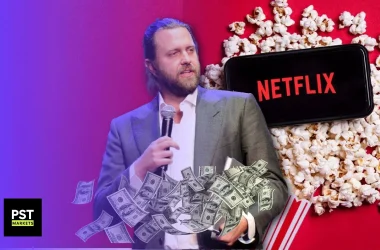From an SEC fine to lawsuits over how it uses members’ tithing contributions to allegations it has a “clandestine hedge fund”, The Church of Jesus Christ of Latter-day Saints or The Mormon Church has definitely been in a lot of controversies lately.
The Church is considered the wealthiest religious organization in the world, with an investment portfolio of more than $100 billion, including a staggering $47 billion invested in stocks; the scale of the church is so massive that Its portfolio is estimated to reach $1 trillion by 2044.
This means the Mormon Church’s portfolio is expected to grow 10 times over the next 20 years, which is pretty insane given that most investment firms can only dream of this. But this information wasn’t as well-known as it is now. The Church prefers confidentiality and has made great efforts to hide its investments from the public eye in recent years.
But this came to an end in 2019 when a former employee of its investment arm, Ensign Peak, filed a whistleblower complaint, claiming that the fund shouldn’t receive tax exemptions because it never engaged in any charitable activities. The whistleblower even accused the Church’s investment arm of operating as a “secret hedge fund”.
After this, the Church revealed its portfolio to the public and started disclosing its holdings on a quarterly basis in 13F filings with the SEC. The Mormon Church disclosed some interesting trades in Q3, which may help inform how you invest as well.
Tithing in the Mormon Church
For those who don’t know, The Church of Jesus Christ of Latter-day Saints or The Mormon Church was founded in 1830 by Joseph Smith in western New York. Over the years, the church has moved to Ohio, Missouri, and Illinois before moving to its current location in Salt Lake City, Utah.
Since then, the church has grown substantially and has become an international organization with more than 17 million members worldwide. This is not a lot of followers compared to other major religions, but it is still impressive for a religion considered to be relatively young.
So, how did the Mormon Church accumulate all this wealth? After all, you can count on one hand investment firms boasting a portfolio this size, much less churches. The key to this is the practice of tithing. Every year, the church collects around $7 billion from its 17 million members.
But unlike other churches, Mormons give about 10% of their income to the church every year. These funds are then used to build and maintain temples and meetinghouses. They’re also used to fund the church’s missionary and education efforts. But that’s not where it ends.
60 Minutes Mormon Church Whistleblower
According to the 60 minutes whistleblower David Nielsen, $1 billion of the collected money is placed into a reserve fund at the church’s investment arm, Ensign Peak. However, Ensign Peak is registered as a non-profit, according to Nielsen. So the invested money’s profits could keep growing tax-free.
Ensign Peak was created in 1997, and since then, the fund has ballooned to more than $100 billion. In addition to the $47 billion in US stocks, the fund invests in private equity, real estate, hybrid investments, bonds, as well as additional international shares. But the church didn’t start investing in 1997. It actually goes back three decades earlier.
The Mormon Church & Investing
In the 60’s, Mormon Church leader Nathan Eldon Tanner started a practice of setting aside money from contributions every year for a “rainy day fund.” By the late 70s, the fund reportedly managed more than $1 billion. And in 2019, it became public that the fund was managing more than $100 billion, prompting leading Mormon figure and Senator, Mitt Romney, to say “Happy that they’ve not only saved for a rainy day, but for a rainy decade.”
The Mormon church isn’t the only religious institution that invests in the stock market. For instance, New York’s Trinity Church has a diverse investment portfolio worth $6 billion. While it pales to the Mormon Church’s investments, it shows that it isn’t out of the ordinary for churches to invest in the stock market.
However, criticism of the Mormon Church stems from the secrecy in which it conducts its investments. Although Ensign Peak was founded in 1997, the church never disclosed its investments until early 2020, after Nielsen accused the church of improperly using charitable donations to fund its $100 billion investments.
Mormon Church Fined $5 Million
These accusations have led the SEC to investigate Ensign Peak, and it was only last February that the charges were settled, with Ensign Peak agreeing to pay a $4 million penalty and the church agreeing to pay a $1 million penalty.
But the controversy didn’t stop there. In November 2023, three members of the Mormon Church sued the church over its handling of tithing money. The lawsuit alleges that the church’s investment arm, Ensign Peak, misused about $350 thousand they donated by investing the money instead of using it for charitable purposes as promised. This is similar to another lawsuit against the church filed by James Huntsman that seeks the return of the $5 million he donated before leaving the church.
Both lawsuits bring up a critical question. Do the church’s investments reflect the wishes of its donors?
The church solicits donations for humanitarian relief with promises that all donations are used to help those in need. But the latest lawsuit alleges that those promises are untrue. Instead, the donations are permanently invested in accounts never used for charitable work.
The Mormon Church’s Fund
So now that we’ve talked about the controversy surrounding the Mormon Church’s fund, let’s get into the fund itself and how it’s performing.
According to the latest 13F form filed in November, the top ten holdings in the Mormon Church’s $47 billion portfolio are Apple, Microsoft, Alphabet, Nvidia, Amazon, UnitedHealth Group, Meta, Mastercard, Exxon, and Tesla, in that order. Nothing interesting. The church’s top 10 holdings are somewhat similar to the top 10 stocks in the S&P 500.
But what’s interesting is the fund’s actions in the past quarter. During this period, the fund reduced its stake in Apple by 3% and decreased its stake by 1% in Microsoft, Nvidia, United Health, Meta, and Mastercard. The fund also reduced its stake in Amazon by a measly 0.2% and in Exxon by 11%. As it reduces its stake in one of the oil industry’s largest players, its increased its stake in Tesla by 6%.
When looking at these trades, it’s easy to see that the church was a net seller in Q3. But more specifically, the church sold some of its stake in consumer related businesses.
Ensign Peak Investments
This brings up two questions. Is Ensign Peak building up cash like Berkshire Hathaway? Or did it move the money into new investments? Next quarter’s filing will paint a better picture of the fund’s activity in Q3, but it seems likely that the fund is building up cash in anticipation of a drop in the market.
After all, all of the stocks the church sold in Q3, except United Health, have something in common. You guessed it. All of the stocks sold except United Health reached new 52-week highs in Q3. So it’s expected to sell at 52-week highs to take some profits and reenter at a lower price point. This is actually a sign of prudent management of the church’s fund.
And on that note, the Mormon Church’s portfolio has been an outstanding performer over the last 2 years. The church started disclosing its holdings in early 2020 with its first 13F filing disclosing its holdings in Q4 2019.
At the time, the church’s portfolio was valued at $37.8 billion and had 1,659 holdings. However, the pandemic happened soon after and its portfolio value tanked to $29.8 billion in Q1 2020. So, the church started to sell off some of its holdings causing it to drop to 1,622.

But with quantitative easing, the church’s portfolio rebounded quickly and reached a valuation of $36.7 billion in Q2 2020. During that time, the church was building back its portfolio as its holdings also increased to 1,671. Since then, the church’s portfolio kept growing in value and peaked at $52.3 billion in Q4 2021 with 2,199 holdings.
Once the Fed started quantitative tightening in 2022 and actually started hiking interest rates in March 2022 to curb soaring inflation, the portfolio began to drop along with the broader market. After peaking in Q4 2021, the church’s portfolio dropped to $49.2 billion in Q1 2022 despite the church increasing its holdings to 2,210.
The church started selling its holdings in Q2 2022 and its portfolio’s value kept declining to $42 billion. Despite increasing its holdings in Q3 2022, its portfolio reached its lowest point since Q3 2020. This led the Ensign Peak to slash its holdings, reducing them to just 1,786 in Q4 2022 marking its lowest number of holdings since Q3 2020.
Surprisingly though, the church’s portfolio rebounded in Q4 2022 and reached a valuation of $44.3 billion. So how did the portfolio rebound in Q4 2022 despite the church reducing its holdings?
Downsizing & Recovery
The church’s portfolio is very similar to the S&P 500 and in Q4 2022, the S&P 500 gained 7.6% despite being down 18% for the full year. So, given its exposure to the S&P 500, the portfolio was able to grow in Q4 2022 despite the church reducing its holdings.
But then 2023 started, and the broader market started to rebound. That was very surprising, since the stock market showed a lot of resilience despite a banking crisis, crypto meltdowns, and economic uncertainty.
As a result, the church’s portfolio grew to $46.2 billion with just 1,772 holdings in Q1 2023. Then it reached $49.3 billion with only 1,761 holdings in Q2 2023. Before its streak ended in Q3 2023, the church’s portfolio reached $46.8 billion on 1756 holdings.
Some of the reduction can be explained by a decline in market euphoria. The enthusiasm which pervaded the market in the first half of 2023 wasn’t there in the second half. In fact, most if not all stocks performed better than expected in the first half. But they lost that momentum in the second part of the year. In fact, the S&P 500 finished Q3 down 3.3% despite reaching a 2023 high at the end of July. Given the church’s portfolio’s exposure to the S&P 500, it’s normal for it to gain or lose value based on the index’s performance.
What’s Next for the Mormon Church?
The question now is whether the drop in its portfolio during Q3 marks the beginning of a downtrend. Historically speaking, US stocks always perform best in Q4. and so far it appears likely that trend will continue. The S&P 500 is already up 6.12% since the beginning of the quarter.
But looking toward 2024, its less clear whether the Mormon Church’s portfolio will continue to do well. Since its performance is tied to the S&P 500, the portfolio is likely to replicate the S&P 500’s performance. Currently, the outlook for the S&P 500 is more bullish than ever.
Most analysts expect the index to gain double digits in 2024. They even expect the S&P 500 to reach new all-time highs by the end of 2024 and break the $5000 mark. So with this expected growth in the S&P 500, the Mormon Church’s portfolio is very likely to continue growing in value over the next year. It could even reach a new all-time high valuation in 2024.
Disclaimer
Please visit and read our disclaimer here.









